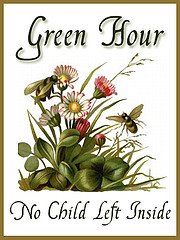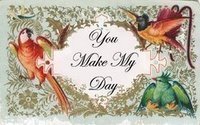"The serious side of life, with all its demands in daily work, is re-enacted in deep earnestness by the child in its play". Rudolf Steiner
Family play is such a fundamental part of a child’s life that I couldn't just stop at one post! I really wanted to share some ideas about setting up family play at home, because this will lead into all sorts of other play too.
The kids and I spend a lot of time at home these days, so our home becomes our kindergarten - and boy, looking around our lounge at 5pm you can sure tell! The cushions could be on the floor having been a makeshift hospital ... the children's chairs have been tipped upside down to make a cafe counter … there is a sheet over the dining table creating a play house with most of my pots and pans inside.
My point is that setting up play at home isn't actually about lots of resources ... its about allowing the home you have to be a playspace. Tidying up time can be a bit of a mission, but really in the big scheme of things what’s a bit of mess? I believe we give our children a great gift by allowing them to really, really play in their own homes.
Whether you are a 'Waldorf mum' or not, I think the Steiner/Waldorf approach to family play translates extremely well to the home environment. This is because, rather than give our chidren 'formed' toys that they quickly tire of, we provide resources that are limited only by the imagination of our little ones. Here are my picks for the 'essentials' for Waldorf family play at home.
A basket of playsilks or muslin wraps. Silk is a beautiful fabric for play, but we all have budgets so baby muslin wraps dyed a variety of colours will do almost as well. I bought a 3 pack of wraps at the supermarket in red, yellow and green ... and they have been the most popular 'toy' I have bought. These wraps get used as wrapping paper for pretend presents, blankets to wrap babies, hide and seek blankets, green grass or blue sea for a story, a sling for a doll baby ....

Cane baskets of varying sizes. While a doll's cot is really lovely, a basket can be a baby's bed, but can then turn into a car-seat, a boat, tipped upside down to become a mountain. As a toddler, Munchkin loves carrying baskets around filled with heavy things, dumping them out and refilling them for sheer pleasure. Now she is deep in imaginative play they are used in new ways every day.
Unformed 'Waldorf blocks'. These are easy to make - get a branch, saw it into different widths, sand them and polish them with olive oil or beeswax. These are wonderful toys - your toddler will build them up and knock them down, or put them into a cane basket and carry it around. In the imaginative eyes of your preschooler these blocks can be anything - a car, a boat, a highchair, a present, a mountain. A 4 year old girl who visits here often always sets them up as a tea party – beautiful!
 Small dishes and utensils
Small dishes and utensils. If money is no object, then there are beautiful wooden sets available for children, and if plastic doesn't bother you there are a myriad of plastic ones available for nix. Often homewares stores and souvenir shops sell small wooden side plates at reasonable prices. We use wooden honey spoons, metal ice-tongs, teaspoons from the kitchen drawer, all sorts of thing! Those of you that manage to find good deals at op shops will find them a treasure trove for this sort of thing. Put them in a basket and see what emerges.
Child sized table and chairs. These have incredible play value beyond just somewhere to sit. The table can easily become the shop, a chair becomes a doll's highchair or put the chairs together and create an oven. Then turn table upside down to become a boat, or cover the chairs with a playsilk. Of course, like all Steiner mums I dream of owning some
Waldorf playstands … I’m working on hubby to build some!
Baskets of natural materials. Think large walnut shells cut in half, wooden pegs, large shells, pinecones, some unspun wool, seedpods, acorns, (watch out for choking risks of course). They are used in so so many ways ... the food in the cafe or the kitchen, coins for the shop, spoons for feeding baby ...
A special doll. Every child needs a special doll ... even boys who, while they play with dolls quite differently still need to 'play out' what they see in the world around them. I personally love the soft, cuddly warmth of a handmade Waldorf doll, even if they aren’t as practical as a plastic one. But whatever you choose, this doll will become your child's baby.

A dolls pushchair. One of the few 'formed' toys that I think every child needs is a decent quality dolls pushchair. I am always struck by how popular these are. Toddlers who are just learning to walk love pushing these around - one very active boy at our Steiner playgroup used to spend almost the whole session pushing one around at great speed. Older boys seem to enjoy them almost as 'indoor wheelbarrows', while girls typically (and I hesitate to sterotype) enjoy pushing their doll babies, with a handbag (read cane basket or tied up playsilk) attached to the handle. You can buy plastic versions very cheaply, but they do tip, and eventually break. A good quality wooden pushchair will outlast all your children, and probably your grandchildren too.
Most importantly though, we need to give our children something to imitate in their play. I've already mentioned the way that children
learn through imitation, and the way that
Waldorf teachers carry out 'worthy' tasks during a kindergarten session.
At home, it makes a huge difference what mum is doing. If we are busy on the computer, quickly rushing around with the vacuum cleaner, throwing the washing in the dryer and cooking dinner out of jars, our children don't see a lot they can imitate in play.
But when we purposely slow down, and do just some of our tasks the old fashioned way, we give our children a wonderful source of ideas. This means sweeping the floors, chopping the vegetable, using an egg-beater rather than a food processor, pegging out the washing, kneading bread rather than using a bread maker, washing dishes by hand. I can feel you all rolling your eyes at me, and I'm not suggesting we do all these tasks all the time, but when we do we make our life at home welcoming and inclusive of our children.
"The primary reason so many parents today find it difficult to be with young children is because modern life doesn’t provide what young children need ... The Waldorf teacher models her classroom and activities on the healthy home. You, the parents, have such a home, or at least the possibility of creating one" Rahima Baldwin Dancy,
You Are Your Child's First Teacher
















